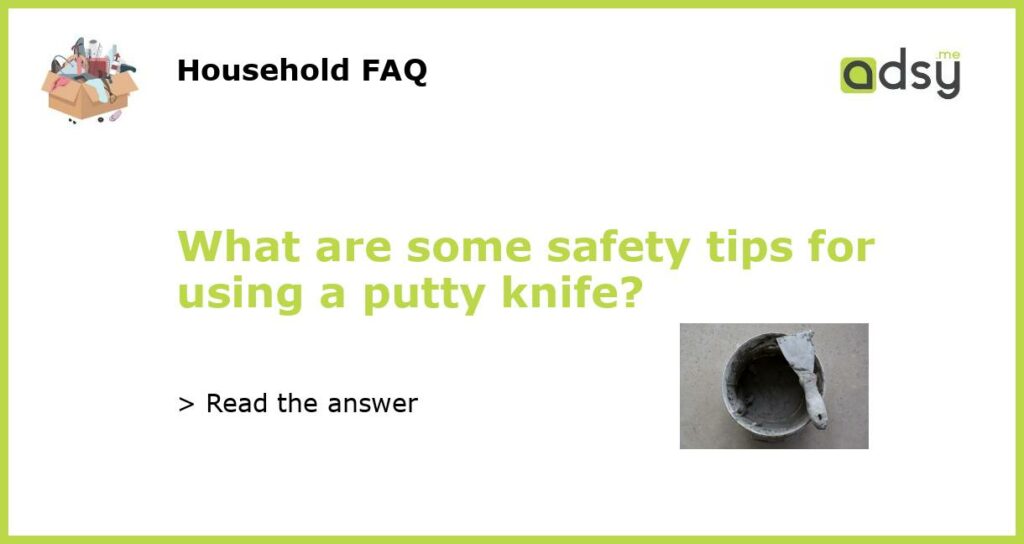Safety Tips for Using a Putty Knife: Protect Yourself from Injury
If you are a DIY enthusiast or a professional, using a putty knife is a task that you undertake more often than not. While putty knives are a versatile tool in the world of hand tools, they can be dangerous if not handled with care and attention. With the blade being sharp, it’s critical to take necessary precautions when working with it. Here are some essential safety tips you should keep in mind when using a putty knife.
Wear Protective Gear
Anytime you are working on a project that involves sharp tools, you must prioritize your safety first. When using a putty knife, wear appropriate personal protective equipment such as gloves, safety goggles, and a dust mask. Gloves provide a layer of protection from cuts and bruises while safety goggles protect your eyes from harmful debris or chemicals. A dust mask shields your lungs from inhaling dust or tiny particles generated during the sanding process.
Use the Right Type of Putty Knife
The right type of putty knife ensures that your project outcomes are satisfactory and risk-free. Be sure to choose the appropriate blade size and flexible or sturdy blade type depending on the task you are undertaking. Handles are also imperative when choosing a putty knife, as you want one that provides a grip for better control.
Clean the Blade After Use
Cleaning the blade after each use makes sure that it remains clean and in the best working condition. When the blade is dull or rusty, it is unsafe to use and can cause injuries. Use a cloth to clean the blade with warm soapy water after each use, then dry it off before storing the putty knife. This ensures that your blade remains clean and safe to use, extending its lifespan.
Proper Use
When using a putty knife, remember to push it away from your body and never towards it. Avoid applying unnecessary force, and let the blade do the work for you. Always make sure the walls or surfaces are clean and smooth before applying putty or removing it. Lastly, never use a putty knife to open a paint can or any other application other than what it is intended for.
The use of putty knives is nearly inevitable for all DIY enthusiasts and professionals working with wood, metal, or other surfaces. These tips should keep you safe and help you protect your tool’s lifespan, which ultimately saves you money. Having the right type of putty knife for your project, wearing protective gear, cleaning the blade after use, and using proper techniques are all vital to avoiding injuries and increasing efficiency.






